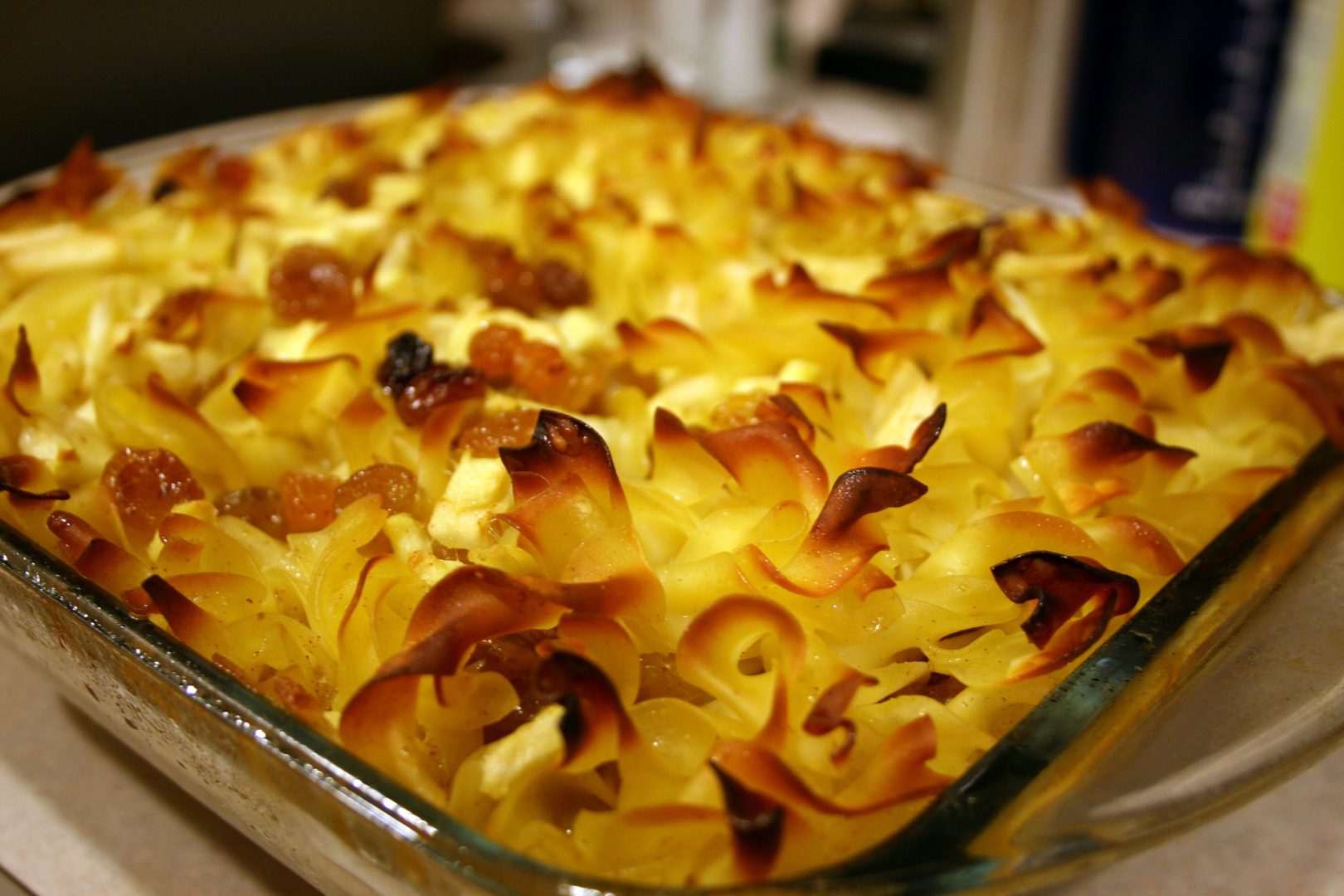Last week we began to look at kugel, the pudding (often noodle or potato) that’s enjoyed on Shabbat. There are practically endless variations and scores of sites that boast the best recipes anywhere. We’ll hunt for the authentic proto-kugel and bite into at a perennial favourite, the Jerusalem Kugel.
The variations are practically endless. The Jewish Food Mailing List Archives provides recipes in three categories: Savoury (129 recipes), Sweet (77) and Passover (89). And if you still haven’t had your fill, the Jewish-food KUGEL Archives has an incredible 231 mouth-watering variations including: Apple Challah, Salt and Pepper, Hungarian, Fish, Cheddar Cheese, and Chocolate Chip. I also appreciate the truth-in-advertising-titled, Incredibly Fattening Noodle Kugel.
When Sarah Laskow was growing up, her family’s favourite kugel was made of “egg noodles, cottage cheese, pineapple, cinnamon, raisins, more eggs and sugar.” Not exactly how they dined on kugel in the impoverished villages of Eastern Europe eight or nine centuries ago.
Laskow wondered, “what was kugel originally meant to be? And is it possible that before potatoes and noodles took it over that it actually tasted good?” So she pored over the historical cookbooks, looked for authentic ingredients (it’s hard to come by beef suet these days), amassed the right baking implements (a ceramic mug resembling a medieval kugeltopf.) Was Laskow successful in her culinary quest? I don’t want to give away too many spoilers but let’s just say her article is titled, “I Tried to Recreate Medieval Kugel and Ended up with a Fruitcake.”
Despite all the variations, there is one type of kugel that seems to have more than its fair share of devotees, the Kugel Yerushalmi or Jerusalem Kugel. Food writer Giora Shimoni explains its history and appeal. “This uniquely-flavoured savoury kugel, of caramelized noodles spiced with black pepper, was brought to the city of Jerusalem by Eastern European Chasidic Jews in the eighteenth century … Kugel Yerushalmi is traditionally eaten after Sabbath morning prayer services – either for kiddish or lunch – along with cholent and pickles.”

Speaking of Jerusalem Kugel, even the most casual visitors to the city’s Meah She’arim neighbourhood will be familiar with text-laden posters warning the community to abstain from smart phones, the Internet or some other vice. Well, the Life in Israel blog has reprinted a Hebrew poster (with accompanying translation) that warns of the various spiritual dangers posed by serving Jerusalem Kugel on Shabbat.
Reason Number 1: The kugel is made from noodles that have the same shape as worms. Young children might get confused and actually eat worms thinking it is allowed.
Reason Number 5: The penetrating aroma of the kugel wafts into the shul and can be a distraction during davening and cause people to lose focus on their prayers.
The sign is signed by “Those who feel the pain of Yerushalayim, the Committee regarding Kugel Yerushalmi.” It should be certainly clear at this point that this poster is actually poking fun at all those other posters of protest. Feel free to dine away with the approbation of great rabbis.
Rabbi Steve Gindi has has done a lot of thinking about kugels. He was speaking to Rabbi Mordechai Shienberger of Jerusalem’s Old City who told him two drashot (religious insights) about Jerusalem Kugel. “The Jerusalem Kugel is round (before it gets cut up). A circle has no end. The greatness of the holiness of Shabbat also contains an infinite, non-ending aspect.
Additionally the Rabbi states that the Gematria [Jewish numerology] of the word kugel and Shabbat are equal.” That second insight puzzled the author because “when one does a little bit math one finds that that Shabbat equals a much higher number than kugel. To this the Rabbi responds that you must eat more kugel for them to become even.”
Or as Tevye might say about the above while pausing to enjoy a nice potato kugel, kabbalistic ruminations “that would cross a rabbi’s eyes!”
